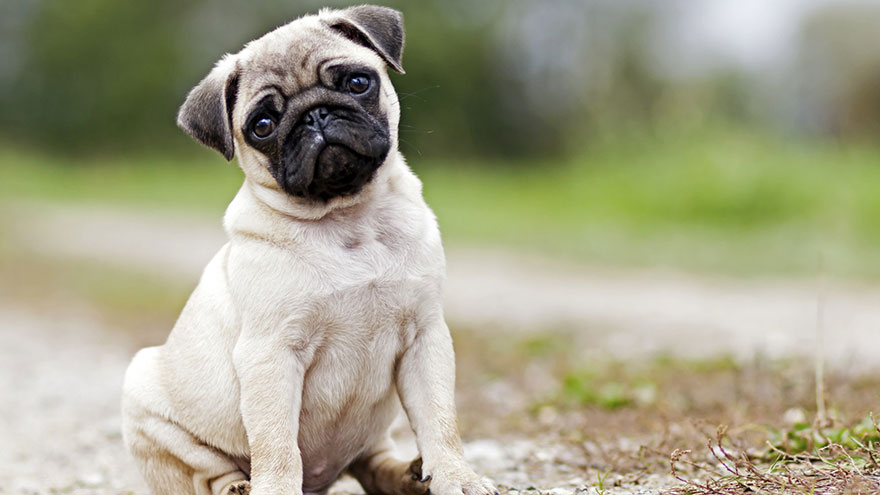What Is the Average Life Expectancy of a Pug Puppy?
It seems once a pug owner, always a pug owner. It’s easy to see why people love this little dog. With his unmistakable wrinkly face and sturdy little frame, the pug easily charms many who make his acquaintance.
If you have a new pug puppy, you can look forward to 12 to 15 years with your lively pal.

The Pug: Mr. Popularity
Living with a pug is often like having a party. He loves a good time and gets along with just about everyone — other dogs, cats and most of all, people, including the little ones. If he has a downside, it would be that he can be a bit challenging to housetrain.
However, he’s a smart fellow, and given time and patience, he’ll not only learn the trick, but also how to let you know when he’s ready to go.
Brachycephalic Challenges
Part of the pug’s allure is his unique face. He’s brachycephalic, which literally translates to “short head.” According to Mar Vista Animal Medical Center, brachycephalic dogs were developed to have a normal lower jaw and a compressed upper jaw, resulting in the “pushed-in” appearance of pugs, bulldogs, boxers and other dog breeds.
Though his face is part of his trademark cute appearance, it can cause medical problems.
Known as brachycephalic syndrome, pugs and other similar breeds frequently suffer from breathing problems. He has narrowed nostrils, known as stenotic nares and an elongated soft palate, which flaps into his throat to cause snorting sounds. He also may have tracheal stenosis, a dangerously narrow windpipe causing anesthetic risk.
Put all this together and you have a dog who has a tough time coping with hot or humid weather, particularly if he’s overweight. As a brachycephalic dog, the pug is one of the breeds most at risk for suffering heatstroke. A pug who has an especially difficult time breathing may benefit from surgery to correct his nostrils and soft palate for easier breathing. Pug dog encephalitis, specific to pugs, is an inflammation of the brain causing seizures and death.
Other Pug Risks
As a small dog, the pug is vulnerable to other conditions seen among dogs of similar size. Legg-Calve’-Perthes disease is a hip deformity reducing the blood supply to the top of the rear leg bone, leading to its degradation. He’s also prone to luxating patellas as well as dental problems because his teeth may be too crowded in his small mouth.
Despite his toy size, he’s also at increased risk of hip dysplaysia, often seen in much larger dogs. Other potential health problems include portosystemic shunt and eye conditions such as dry eye, entropion, corneal ulcers and pigmentary keratitis.
Pug Care
If you’re going with a pug, choose your breeder wisely, going with one who will verify that his breeding dogs have been screened for defects. Health registries, such as the Canine Health Information Center, are one way to check the health of a pug puppy’s parents, if they’re registered.
Once you have your pug puppy, take good care of him to minimize his risk of illness. He should not live outside, given his breathing issues, but he will appreciate moderate walks or an energetic game of fetch. You will have to learn how to overcome the temptation of his pleading eyes as he begs for food as an overweight pug has a more difficult time breathing.
Though his coat only requires occasional brushing to get rid of dead hair, he needs his facial wrinkles cleaned and dried regularly to prevent skin infections.
You Might Also Like :: How to Care for Your Pug

